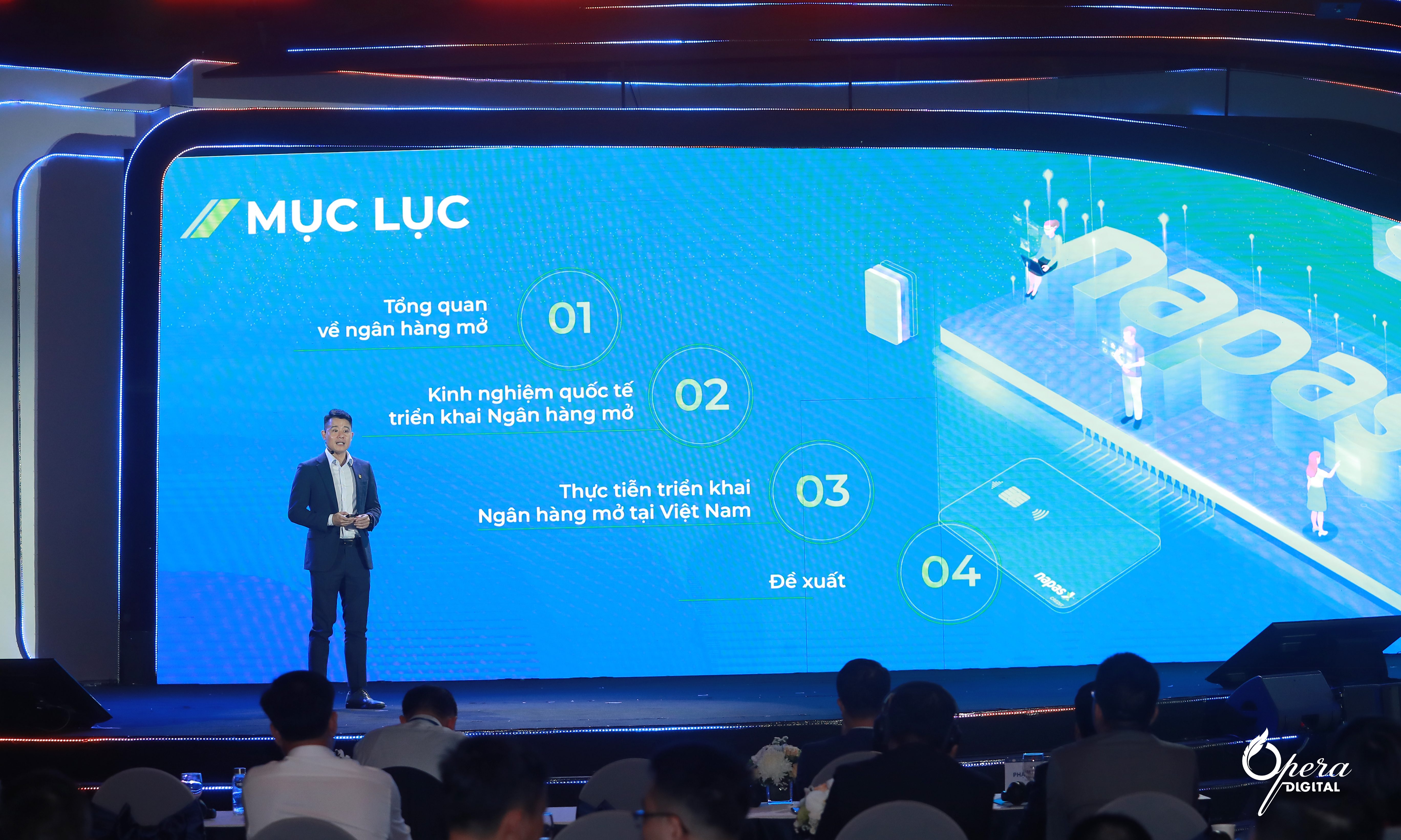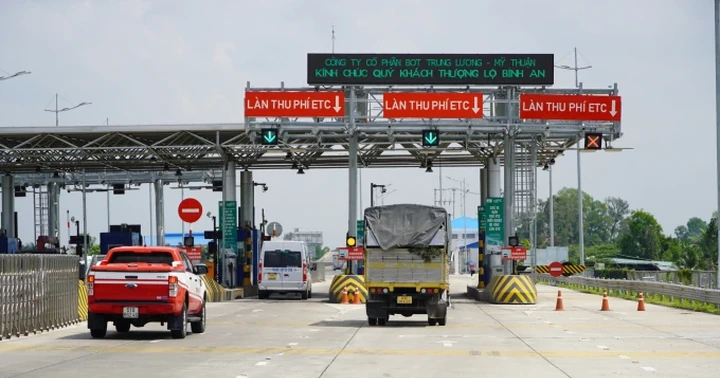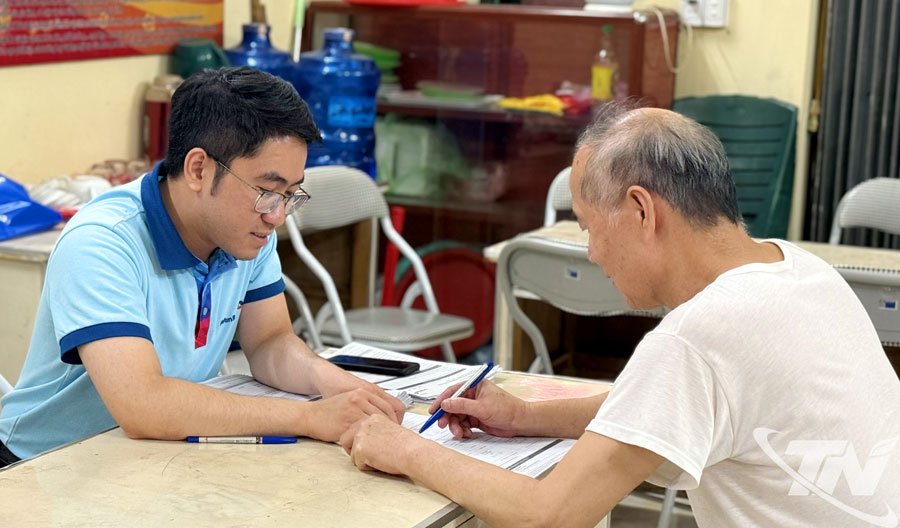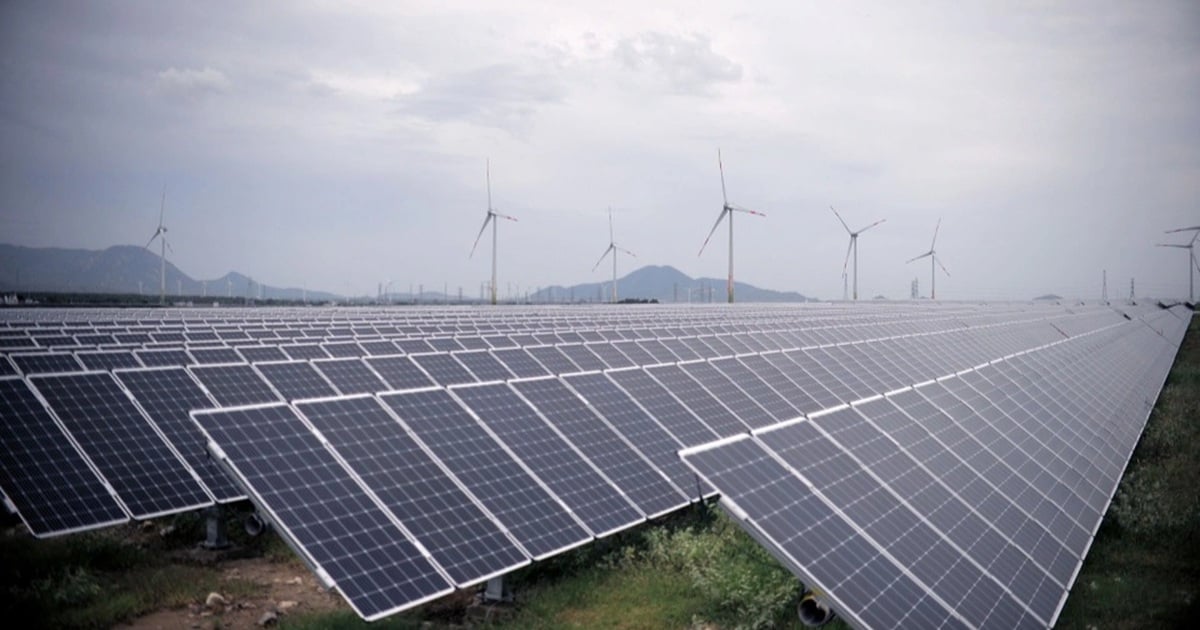
Regarding the issue of developing the digital ecosystem, Mr. Nguyen Hoang Long - Deputy General Director of NAPAS - shared content about the trend of implementing open banking in the world and the implementation practices in Vietnam.
Accordingly, open banking is a model of connection, processing open application programming interfaces that allow third parties to provide services to access customers' banking data information based on customers' consent. Currently, in the world, the trend of common infrastructure for open banking is increasing, common infrastructure helps promote faster development than spontaneous connection, common infrastructure is licensed or operated by large reputable organizations/associations.
Quickly catching up with the global trend, in Vietnam, banks are also actively promoting the digital transformation process, sharing banking data with third parties (TPP) through the use of Open API. From 2020 to now, a series of banks have joined in developing this model such as Vietinbank, BIDV , OCB, MB...
“However, banks and TPPs are proactively searching and selecting suitable connection partners according to their needs and interacting directly to integrate and deploy. At the same time, they customize the connection based on specific requirements and agreement between the two parties. The implementation between the parties still faces many difficulties. Each bank must build and operate its own standards and connections, increasing operating costs and wasting resources.
Banks need to carry out the entire implementation process with TPP from KYC, onboarding, technical connection... TPP uses many standards, connecting with banks. Each connection must review and operate different sets of legal documents. Banks open many connections to TPP and do not have the same data security standards..." - Mr. Long shared.
According to Mr. Long, the common infrastructure for open banking will bring many practical benefits. Customers will have optimized experiences, access to many sources of information and services, handle financial needs quickly, personalize services, share data securely, have many incentives, and reduce costs. For banks and Fintech companies, the common infrastructure for Open Banking will reduce the complexity of legal implementation, reduce security risks, save costs and resources, increase service scalability, add opportunities to reach customers, cross-sell products and services, etc.

On the management side, a common open banking infrastructure also makes it easier to monitor the market, promote the digital ecosystem, implement the digital economic development policy, and create a foundation for the development of open finance...
NAPAS representative said: “In the coming time, with the cooperation of the whole market, under the direction of the State Bank, the implementation of open banking will bring many benefits to customers, contributing to promoting the digital transformation process of the banking industry. Payment infrastructure providers such as NAPAS are also ready to prepare facilities, products and services to catch up and serve banks and third parties providing services on the open banking infrastructure to deploy solutions and develop technical standards for research and application in non-cash payments to promote innovation, increase customer experience; improve the efficiency of the digital transformation process”.
At the same time, NAPAS also builds a digital payment infrastructure to be ready to meet the digital transformation process in the current and future payment sector. Develop multi-channel, multi-media products, support public service payments in the fields of education, healthcare, public transport and other market needs.
Source: https://laodong.vn/kinh-doanh/ha-tang-chung-ve-ngan-hang-mo-se-mang-lai-nhieu-loi-ich-thiet-thuc-1337973.ldo



![[Photo] The ceremonial artillery is ready to "fire" for the second parade rehearsal at My Dinh National Stadium.](https://vstatic.vietnam.vn/vietnam/resource/IMAGE/2025/8/24/883ec3bbdf6d4fba83aee5c950955c7c)
![[Photo] Impressive image of 31 planes taking flight in the sky of Hanoi during their first joint training](https://vstatic.vietnam.vn/vietnam/resource/IMAGE/2025/8/24/2f52b7105aa4469e9bdad9c60008c2a0)

![[Photo] Party and State leaders meet with representatives of all walks of life](https://vstatic.vietnam.vn/vietnam/resource/IMAGE/2025/8/24/66adc175d6ec402d90093f0a6764225b)

![[Photo] Phu Quoc: Propagating IUU prevention and control to the people](https://vstatic.vietnam.vn/vietnam/resource/IMAGE/2025/8/24/f32e51cca8bf4ebc9899accf59353d90)
































































































Comment (0)